#eisenhower library
Text
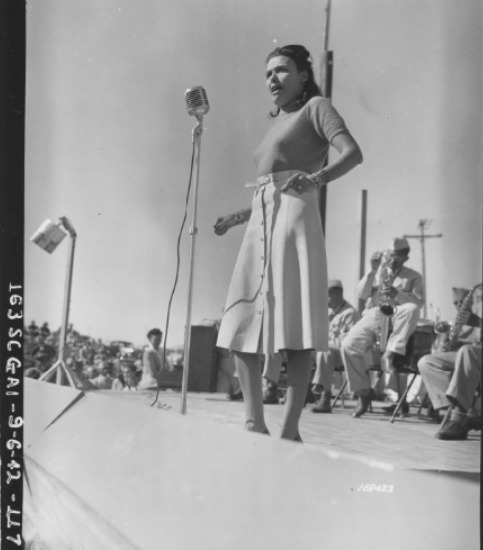
Original caption: “Hot Singer, Lena Horne, Has Audience Jumping With Her Singing at Hollywood Victory Committee Show” Ft. Huachuca, AZ, 9/6/1942, NARA ID 266694436.
Broadway First: Theater Named for LENA HORNE!
First NYC theater named for a Black woman honors legend
By Miriam Kleiman, Public Affairs
Civil Rights activist, singer, actress, and dancer Lena Horne (1917–2010) broke racial barriers and achieved many “firsts” including being the first Black performer hired to sing with a major white band, play the Copacabana nightclub, and sign a Hollywood contract. This week she (posthumously) achieved another milestone when Broadway’s Atkinson Theatre was renamed The Lena Horne Theatre. She features prominently in our records: supporting the troops in World War II, meeting with presidents, and marching on Washington.
Video: Lena Horne Christens the USS George Washington Carver, Richmond, CA, 5/17/1943, NARA ID 77813.

Original caption: "Lena Horne conserves fuel (gas)." WWII, NARA ID 535820.
Lena Horne at the March on Washington 8/28/1963, NARA ID 542057.

Lena Horne with JFK 11/20/1963, JFK Library image.

Lena Horne with IKE 3/19/55, image online.
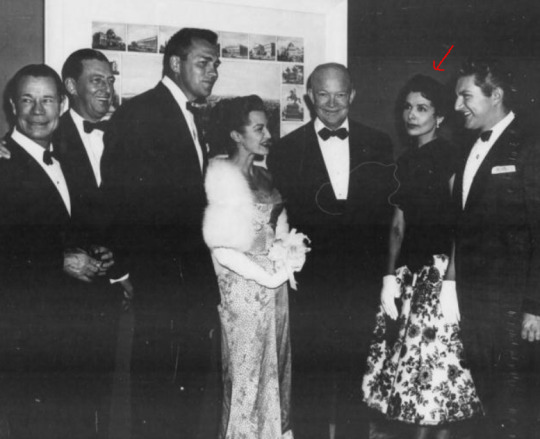
Lena Horne with President Truman at his Inaugural Gala where she sang "Stormy Weather" 1/19/1949. Truman Library 64-1-31. NARA ID 200002.


More online:
Black History special topics page - NARA’s related online resources
1966 Interview - hear Horne discuss her life and career, civil rights, Billie Holiday and Joe Lewis. Preserved by Pacifica Radio Archives with National Historical Publications and Records Commission support.
Celebrating Black History Month: Hidden Gems, AOTUS blog
Statement by President Obama on the Passing of Lena Horne, Obama Library
President Reagan’s remarks for Kennedy Center Honorees, 12/2/1984, Reagan Library
#black history#blm#civil rights#equity#nhprc#jazz#black women#music history#jfk library#eisenhower library#truman library#lena horn#broadway#lena horne theater#broadway history#broadwaynews#lenahornetheater#musical theater#theater news
98 notes
·
View notes
Text

Student June Bronfenbrenner at an early Xerox machine photocopying a book, Milton S. Eisenhower Library, Johns Hopkins University, Baltimore, Maryland, 1976.
#technology#photocopier#Xerox#library#June Bronfenbrenner#Milton S. Eisenhower Library#Johns Hopkins University#Baltimore#Maryland#USA#1976
141 notes
·
View notes
Text
What’s that elephant the Danes are wearing?

Tatler’s guide to the emblems and quirks of Denmark’s highest honour, the Order of the Elephant.
A curious little diamond-encrusted elephant, a blue sash, a gold collar – and sometimes a big flaming cape…Tatler looks into the history and tradition of Denmark's most privileged Order.
With Frederik X set to become sovereign of the Order as he becomes King on Sunday, you might see a few of these elephants around Copenhagen's royal palaces
By Isaac Zamet
12 January 2024
When Crown Prince Frederik becomes Frederik X of Denmark on Sunday, he will also replace his mother, Queen Margrethe II, as the sovereign of Denmark’s most ancient and distinguished order of chivalry, the Order of the Elephant.
Though it was officially refounded in 1693, the order dates all the way back to the 1400s, when it was established as a religious confraternity by a group of about fifty Danish knights.
In the 1400s, prior to the Reformation which gripped Europe and divided the church, such religious ‘clubs’ as the Order of the Elephant were common features of aristocratic life.
At the time of the Order of the Elephant's birth, Christian I was King of Denmark – and in fact, Norway and Sweden too, creating a personal union known as the Kalmar Union.
During this period, the emblem of the club was an image of the Virgin Mary holding her Son within a crescent moon.
This was hung from a collar formed of links in the shape of elephants.
The confraternity mutated over the centuries but endured a stifled period after the Reformation in which such clubs became suspect.

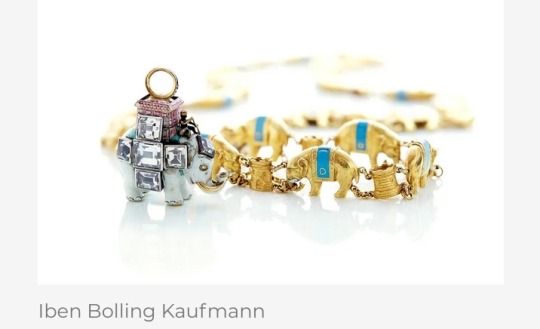
In 1580, Frederik II – eight Frederiks prior to our current Frederik – revived the order and replaced the medallion of the mother and child with an elephant (a Reformation-safe, Protestant approach – if a quirky one!).
But it was Christian V, in 1693, who gave the club its official statues and founding order.
At this time, it was scheduled as comprising 30 noble knights and one Grand Master (the King) along with his sons.
It was only in 1958 that the statutes were amended by Royal Ordinance to allow the ennoblement of women as members of the order.
Between 1580 and today, around 890 persons have been bestowed with the Order of the Elephant; with Queen Margrethe adding 68 people during her 40 year reign.
The recipients are almost always royal persons and foreign heads of state – though in a rare exception, the order was given to a commoner in 2000.


This was the deceased shipping magnate, Mærsk Mc-Kinney Møller, who was recognised for exceptional contribution to Danish economic strength and Danish society.
Those unfamiliar with the man himself will surely recognise his name from the famous shipping containers.
The A.P. Møller – Mærsk group was actually founded in 1904 by his father. It is now worth $81bn dollars.
At the time of Møller’s membership of the order, he was the only non-royal and non-head of state to hold the honour; though it had previously been held by the pioneering nuclear physicist, Niels Bohr.
Membership of the order comes with possession of its rather eye-catching elephantine emblem.
The elephant is made of white-enamelled gold with blue housings and is about 5cm high.

On its back, the elephant bears a tower of pink enamelled masonry (a design originally intended to reflect the howdah compartments of the Indian subcontinent).
A number of large cut diamonds adorn the elephant, along with a crowned monogram of the monarch reigning when it was made.
One wonders, then, when the first Frederikian elephants will be carved.
At the top of the tower on the elephant’s back sits a gold ring, from which the badge can be hung from the collar or tied to a sash.
On the elephant's back sits a turbaned ‘moor mahout.’
It should be noted that some would regard such a depiction as an exoticising caricature.
Others would regard its appearance merely as an expression of an historical perspective.
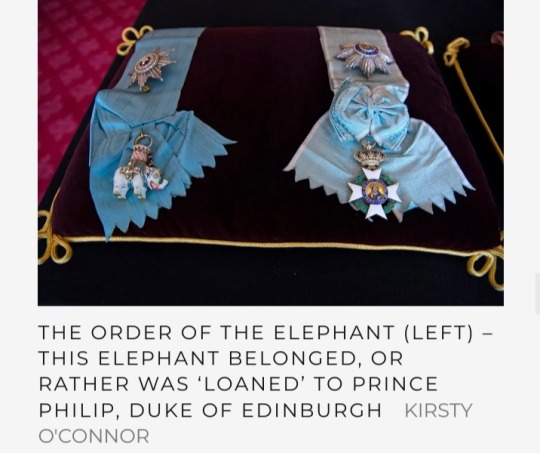
One striking detail about the circulation of the elephants is that each Order of the Elephant is – in principle – on loan and must be returned to the Chapter of the Royal Orders of Chivalry when a member of the Order has passed away.
This rather quaint custom means that elephants are inherited and used several times by different members of the order, with some dating back hundreds of years.
Interestingly, the done thing is not to disclose to whom an Elephant has previously been given – though there are some traditional lines of inheritance.
For example, the elephant recently bestowed on Prince Christian belonged previously to his grandfather, Prince Henrik.
This handing over was always to be, on the basis of a traditional line of inheritance.
There are two exceptional elephants which have eluded the rule of the ‘loan’ – one remains in the Chancellery Museum at Paris and a second remains on display at the Dwight Eisenhower Presidential Library in the US.
Another beautiful quirk of membership of the Order is that a member’s coat of arms is always painted and subsequently hung in the Knight’s Chapel at Frederiksborg Castle in Hillerød.
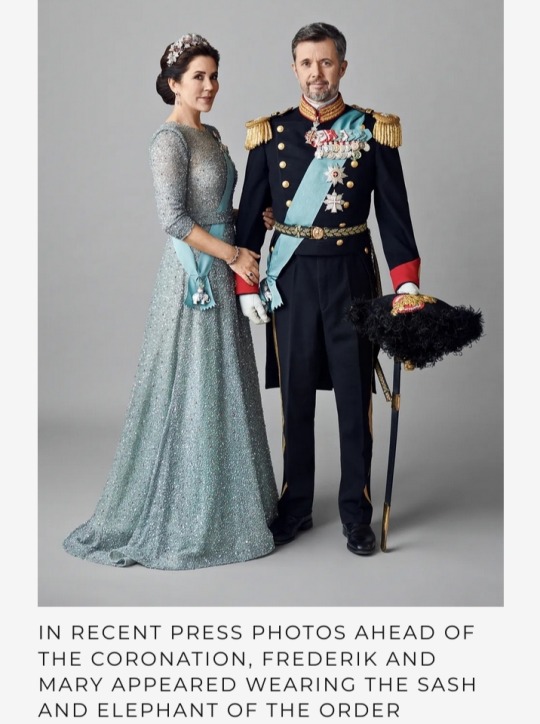
As to when the elephants come out to play, there are some rather interesting traditions concerning how and when to wear them.
The Order of the Elephant has three festival days: new year’s day, the monarch’s birthday, and the birthday of Valdemar the Victorious, which, if you didn’t know is on June 28.
On these festival days, the Order of the Elephant is worn on the chest on a gold chain link collar, with links shaped as towers and elephants.
The collar sits on each shoulder. On other important occasions, the order is worn on a bright blue sash with a breast star.
The star of the order is an eight-pointed silver star with smooth rays; at its centre sits an enameled red disc with a white cross, surrounded by a laurel wreath in silver.
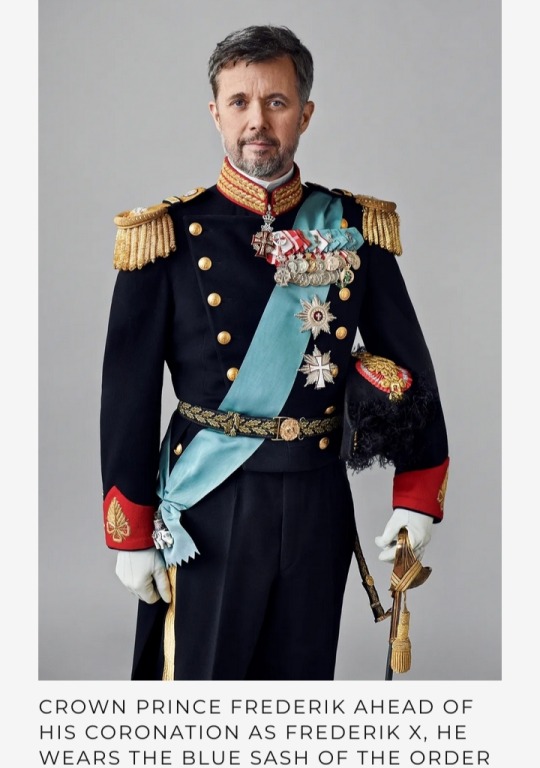
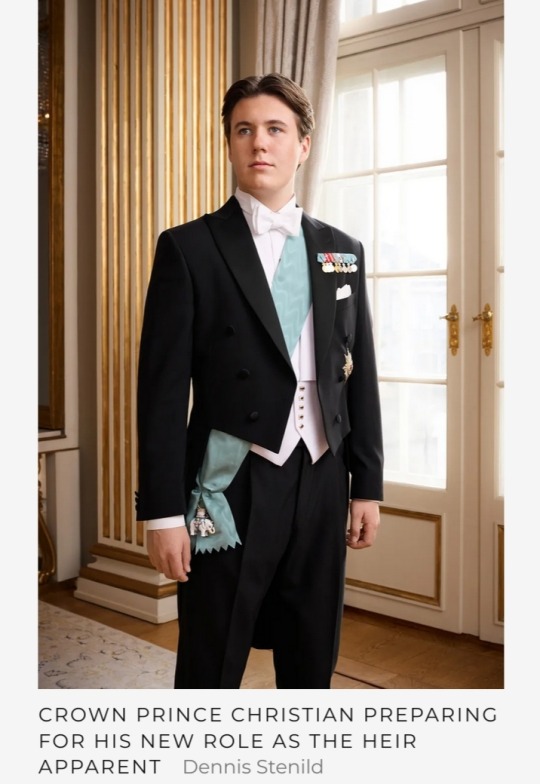
#Frederik X#Queen Margrethe II#Monarchy of Denmark#Danish Royal Family#House of Glücksburg#Christian I#Kalmar Union#Order of the Elephant#Frederik II#Christian V#Mærsk Mc-Kinney Møller#Frederikian elephants#Chancellery Museum#Dwight Eisenhower Presidential Library#Knight’s Chapel#Frederiksborg Castle#Crown Prince Christian of Denmark#Queen Mary of Denmark
32 notes
·
View notes
Text

#dwight d. eisenhower#banned books week#books#booklr#booksareawesome#reading#hpl#reading is awesome#hammond public library#we love our library
18 notes
·
View notes
Text
Through Mamie's Eyes
Recently I visited the Dwight D. Eisenhower Presidential Library, Museum and Boyhood Home. Curator William Snyder provided us with a tour. I loved learning the Eisenhower story through Mamie’s eyes.
William Snyder curator of the museum provided our tour.
We saw the boyhood house where President Eisenhower grew up, then we toured the library and museum, plus, we viewed the memorial where he and…
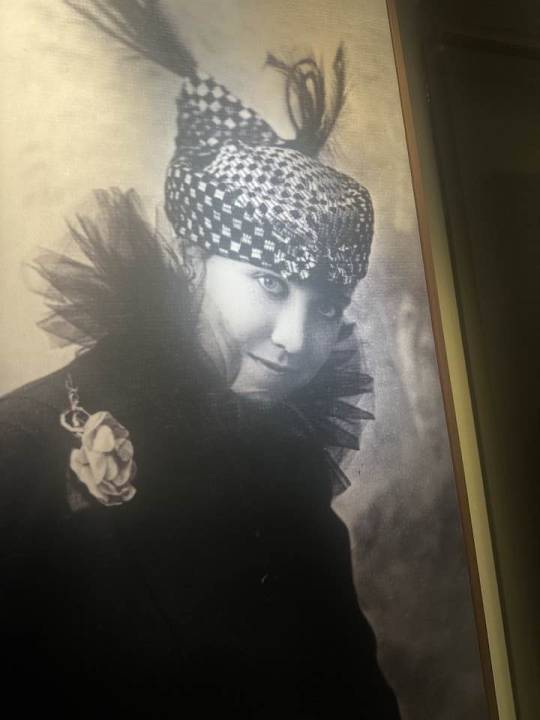
View On WordPress
#"Icky" Eisenhower#34th President of the United States#Abilene#Atomic Energy Agency#Belle Springs Creamery#Blackhawk Cocshutt tractor#campaign#Cold War#Colorado#Columbia University#cowboy trail#curator#Denver#Doud Eisenhower#Dwight D. Eisenhowere Presidential Library Museum and Boyhood Home#Eda Mae Doud#Eisenhower#Eisenhower trail#Eleanor Carlson Doud#Elivera Mathilda Carlson#Gettysburg#highway system#Ida Eisenhower#inaguration#John Sheldon Doud#Kansas boy#Mamie bangs#Mamie Eisenhower#memoiral#military journey
0 notes
Text
4 Tips for Autistic Writers

Autistic writers can face unique challenges when it comes to writing. NaNo Participant Auden Halligan has tips to handle some of those challenges!
So, you’ve just sat down at your desk, all ready to work on your next chapter, but you just can’t seem to start. Something is itching at your brain, and no matter how hard you think, you can’t figure it out. For autistic writers, that itch might be even harder to get around when compounded with autistic inertia, introspection issues, and sensory processing disorder — even if we were super excited to get started, sometimes the stumbling blocks are enough to keep us from going anywhere at all.
Here are four tips to identify your struggles and work around them rather than against them as an autistic writer!
1. Schedule your writing time appropriately
While keeping a schedule can help you stave off unwanted change in your routine, the need to switch to another task when the clock strikes the hour sometimes feels like a monumental task, one that eventually becomes detrimental to your creative pursuits.
If switching tasks is the biggest hurdle to your writing, setting a designated writing time with no other plans around it could do the trick. Oftentimes, just one hour of time to transition from doing dishes to sitting down at your computer to write is exactly what you need to get past that point and find your writing headspace.
2. Make sure your sensory environment is right
Sometimes getting into that writing headspace is harder than normal, but you can’t put your finger on a reason. Chances are, you’re not quite ready until you have your sensory needs met and you can fully focus on your story.
Personally, I like to be on the couch with my water bottle, a playlist at just the right volume, and a comfortable jacket or hoodie on. For you, the ideal sensory space might involve a desk and a snack, a pet nearby, and a quiet room. For others, it could be outside or even at a library or coffee shop. Autistic people are all different and so are their sensory needs, so this one is super subjective — do what works best for you!
3. Take breaks often
Writing can be exhausting, and if you’re struggling to keep going, you might need to take a pause. If you’re like me and struggle with remembering to hydrate and eat once you’re deep in a task, use your break to get some water and a snack. If you’re having trouble staying focused, get up and move around and stim or go outside to give your brain a reset. If you feel like you’ve gotten some good progress done, however small, reward yourself — do something related to your special interest, dance with a pet, and celebrate your little (or big!) win!
The pomodoro method is a good way to keep yourself from working too long without a break, and if that doesn’t work for you, methods like the Eisenhower method with breaks interspersed and even simply inserting breaks into your scheduled writing time are just as valid.
4. Don’t be afraid to skip around
Another thing that often trips us autistic people up is needing to follow the story down its natural progression, from start to middle all the way to the finish. But inevitably, once we’ve gotten past the initial excitement of having the project started, we hit a stumbling block…and the project gets abandoned. I’ve left behind countless projects because I lost interest after hitting a scene I wasn’t excited for after just a few chapters.
To combat this, try writing out of order! Skip ahead to the scene directly after your stumbling block. You could also skip to the next scene your favorite character is in or even to the climax if it helps you move forward. If you’re having trouble putting your first words down, try writing a random scene in the middle of your story to get into the groove of writing your characters.
Alternately, if you can’t abide by the out of order method and really need to get your characters from Point A to Point B, try putting the scene you’re stuck on in brackets. For example:
[Character 1 and Character 2 fight over the decision to kick Character 3 off the team. 2 leaves in anger.]
It’s simple, efficient, and gets you out of that particular rut so you can keep moving toward that sweet, sweet conversation you’ve wanted to write since Day 1.
Now go forth and write, my friends!

Auden Halligan is a creator through and through. She’s been writing her entire life, but didn’t start participating in NaNoWriMo until 2017–right now she’s working on developing a TV series (or two!) and has several novels and short films in the drafting phase. Auden is currently a college student studying film production and hoping to minor in disability studies. You can find her on her very sparse Twitter at ink.and.spite.
Photo by Lisa Fotios from Pexels
If you’re an autistic writer, check out the Pillow Fort in the NaNoWriMo forums! It’s a group for people who are neurodivergent, have disabilities, mental health concerns, or physical challenges that affect their lives.
#nanowrimo#camp nanowrimo#writing#autistic writers#writing advice#by nano guest#Auden Halligan#neurodivergent writers
5K notes
·
View notes
Text
On october 16, 1962, John F. Kennedy and his advisers were stunned to learn that the Soviet Union was, without provocation, installing nuclear-armed medium- and intermediate-range ballistic missiles in Cuba. With these offensive weapons, which represented a new and existential threat to America, Moscow significantly raised the ante in the nuclear rivalry between the superpowers—a gambit that forced the United States and the Soviet Union to the brink of nuclear Armageddon. On October 22, the president, with no other recourse, proclaimed in a televised address that his administration knew of the illegal missiles, and delivered an ultimatum insisting on their removal, announcing an American “quarantine” of Cuba to force compliance with his demands. While carefully avoiding provocative action and coolly calibrating each Soviet countermeasure, Kennedy and his lieutenants brooked no compromise; they held firm, despite Moscow’s efforts to link a resolution to extrinsic issues and despite predictable Soviet blustering about American aggression and violation of international law. In the tense 13‑day crisis, the Americans and Soviets went eyeball-to-eyeball. Thanks to the Kennedy administration’s placid resolve and prudent crisis management—thanks to what Kennedy’s special assistant Arthur Schlesinger Jr. characterized as the president’s “combination of toughness and restraint, of will, nerve, and wisdom, so brilliantly controlled, so matchlessly calibrated, that [it] dazzled the world”—the Soviet leadership blinked: Moscow dismantled the missiles, and a cataclysm was averted.
Every sentence in the above paragraph describing the Cuban missile crisis is misleading or erroneous. But this was the rendition of events that the Kennedy administration fed to a credulous press; this was the history that the participants in Washington promulgated in their memoirs; and this is the story that has insinuated itself into the national memory—as the pundits’ commentaries and media coverage marking the 50th anniversary of the crisis attested.
Scholars, however, have long known a very different story: since 1997, they have had access to recordings that Kennedy secretly made of meetings with his top advisers, the Executive Committee of the National Security Council (the “ExComm”). Sheldon M. Stern—who was the historian at the John F. Kennedy Library for 23 years and the first scholar to evaluate the ExComm tapes—is among the numerous historians who have tried to set the record straight. His new book marshals irrefutable evidence to succinctly demolish the mythic version of the crisis. Although there’s little reason to believe his effort will be to any avail, it should nevertheless be applauded.
Reached through sober analysis, Stern’s conclusion that “John F. Kennedy and his administration, without question, bore a substantial share of the responsibility for the onset of the Cuban missile crisis” would have shocked the American people in 1962, for the simple reason that Kennedy’s administration had misled them about the military imbalance between the superpowers and had concealed its campaign of threats, assassination plots, and sabotage designed to overthrow the government in Cuba—an effort well known to Soviet and Cuban officials.
In the 1960 presidential election, Kennedy had cynically attacked Richard Nixon from the right, claiming that the Eisenhower-Nixon administration had allowed a dangerous “missile gap” to grow in the U.S.S.R.’s favor. But in fact, just as Eisenhower and Nixon had suggested—and just as the classified briefings that Kennedy received as a presidential candidate indicated—the missile gap, and the nuclear balance generally, was overwhelmingly to America’s advantage. At the time of the missile crisis, the Soviets had 36 intercontinental ballistic missiles (ICBMs), 138 long-range bombers with 392 nuclear warheads, and 72 submarine-launched ballistic-missile warheads (SLBMs). These forces were arrayed against a vastly more powerful U.S. nuclear arsenal of 203 ICBMs, 1,306 long-range bombers with 3,104 nuclear warheads, and 144 SLBMs—all told, about nine times as many nuclear weapons as the U.S.S.R. Nikita Khrushchev was acutely aware of America’s huge advantage not just in the number of weapons but in their quality and deployment as well.
Kennedy and his civilian advisers understood that the missiles in Cuba did not alter the strategic nuclear balance.
Moreover, despite America’s overwhelming nuclear preponderance, JFK, in keeping with his avowed aim to pursue a foreign policy characterized by “vigor,” had ordered the largest peacetime expansion of America’s military power, and specifically the colossal growth of its strategic nuclear forces. This included deploying, beginning in 1961, intermediate-range “Jupiter” nuclear missiles in Italy and Turkey—adjacent to the Soviet Union. From there, the missiles could reach all of the western U.S.S.R., including Moscow and Leningrad (and that doesn’t count the nuclear-armed “Thor” missiles that the U.S. already had aimed at the Soviet Union from bases in Britain).
The Jupiter missiles were an exceptionally vexing component of the U.S. nuclear arsenal. Because they sat aboveground, were immobile, and required a long time to prepare for launch, they were extremely vulnerable. Of no value as a deterrent, they appeared to be weapons meant for a disarming first strike—and thus greatly undermined deterrence, because they encouraged a preemptive Soviet strike against them. The Jupiters’ destabilizing effect was widely recognized among defense experts within and outside the U.S. government and even by congressional leaders. For instance, Senator Albert Gore Sr., an ally of the administration, told Secretary of State Dean Rusk that they were a “provocation” in a closed session of the Senate Foreign Relations Committee in February 1961 (more than a year and a half before the missile crisis), adding, “I wonder what our attitude would be” if the Soviets deployed nuclear-armed missiles to Cuba. Senator Claiborne Pell raised an identical argument in a memo passed on to Kennedy in May 1961.
Given America’s powerful nuclear superiority, as well as the deployment of the Jupiter missiles, Moscow suspected that Washington viewed a nuclear first strike as an attractive option. They were right to be suspicious. The archives reveal that in fact the Kennedy administration had strongly considered this option during the Berlin crisis in 1961.
It’s little wonder, then, that, as Stern asserts—drawing on a plethora of scholarship including, most convincingly, the historian Philip Nash’s elegant 1997 study, The Other Missiles of October—Kennedy’s deployment of the Jupiter missiles “was a key reason for Khrushchev’s decision to send nuclear missiles to Cuba.” Khrushchev reportedly made that decision in May 1962, declaring to a confidant that the Americans “have surrounded us with bases on all sides” and that missiles in Cuba would help to counter an “intolerable provocation.” Keeping the deployment secret in order to present the U.S. with a fait accompli, Khrushchev may very well have assumed America’s response would be similar to his reaction to the Jupiter missiles—rhetorical denouncement but no threat or action to thwart the deployment with a military attack, nuclear or otherwise. (In retirement, Khrushchev explained his reasoning to the American journalist Strobe Talbott: Americans “would learn just what it feels like to have enemy missiles pointing at you; we’d be doing nothing more than giving them a little of their own medicine.”)
Khrushchev was also motivated by his entirely justifiable belief that the Kennedy administration wanted to destroy the Castro regime. After all, the administration had launched an invasion of Cuba; had followed that with sabotage, paramilitary assaults, and assassination attempts—the largest clandestine operation in the history of the CIA—and had organized large-scale military exercises in the Caribbean clearly meant to rattle the Soviets and their Cuban client. Those actions, as Stern and other scholars have demonstrated, helped compel the Soviets to install the missiles so as to deter “covert or overt US attacks”—in much the same way that the United States had shielded its allies under a nuclear umbrella to deter Soviet subversion or aggression against them.
Khrushchev was also motivated by his entirely justifiable belief that the Kennedy administration wanted to destroy the Castro regime. After all, the administration had launched an invasion of Cuba; had followed that with sabotage, paramilitary assaults, and assassination attempts—the largest clandestine operation in the history of the CIA—and had organized large-scale military exercises in the Caribbean clearly meant to rattle the Soviets and their Cuban client. Those actions, as Stern and other scholars have demonstrated, helped compel the Soviets to install the missiles so as to deter “covert or overt US attacks”—in much the same way that the United States had shielded its allies under a nuclear umbrella to deter Soviet subversion or aggression against them. [...]
The Soviets were entirely justified in their belief that Kennedy wanted to destroy the Castro regime.
Kennedy and his civilian advisers understood that the missiles in Cuba did not alter the strategic nuclear balance. Although Kennedy asserted in his October 22 televised address that the missiles were “an explicit threat to the peace and security of all the Americas,” he in fact appreciated, as he told the ExComm on the first day of the crisis, that “it doesn’t make any difference if you get blown up by an ICBM flying from the Soviet Union or one that was 90 miles away. Geography doesn’t mean that much.” America’s European allies, Kennedy continued, “will argue that taken at its worst the presence of these missiles really doesn’t change” the nuclear balance. [...]
Moreover, unlike Soviet ICBMs, the missiles in Cuba required several hours to be prepared for launch. Given the effectiveness of America’s aerial and satellite reconnaissance (amply demonstrated by the images of missiles in the U.S.S.R. and Cuba that they yielded), the U.S. almost certainly would have had far more time to detect and respond to an imminent Soviet missile strike from Cuba than to attacks from Soviet bombers, ICBMs, or SLBMs. [...]
On that first day of the ExComm meetings, Bundy asked directly, “What is the strategic impact on the position of the United States of MRBMs in Cuba? How gravely does this change the strategic balance?” McNamara answered, “Not at all”—a verdict that Bundy then said he fully supported. The following day, Special Counsel Theodore Sorensen summarized the views of the ExComm in a memorandum to Kennedy. “It is generally agreed,” he noted, “that these missiles, even when fully operational, do not significantly alter the balance of power—i.e., they do not significantly increase the potential megatonnage capable of being unleashed on American soil, even after a surprise American nuclear strike.”
Sorensen’s comment about a surprise attack reminds us that while the missiles in Cuba did not add appreciably to the nuclear menace, they could have somewhat complicated America’s planning for a successful first strike—which may well have been part of Khrushchev’s rationale for deploying them. If so, the missiles paradoxically could have enhanced deterrence between the superpowers, and thereby reduced the risk of nuclear war.
Yet, although the missiles’ military significance was negligible, the Kennedy administration advanced on a perilous course to force their removal. The president issued an ultimatum to a nuclear power—an astonishingly provocative move, which immediately created a crisis that could have led to catastrophe. He ordered a blockade on Cuba, an act of war that we now know brought the superpowers within a hair’s breadth of nuclear confrontation. The beleaguered Cubans willingly accepted their ally’s weapons, so the Soviet’s deployment of the missiles was fully in accord with international law. But the blockade, even if the administration euphemistically called it a “quarantine,” was, the ExComm members acknowledged, illegal. As the State Department’s legal adviser recalled, “Our legal problem was that their action wasn’t illegal.” Kennedy and his lieutenants intently contemplated an invasion of Cuba and an aerial assault on the Soviet missiles there—acts extremely likely to have provoked a nuclear war. In light of the extreme measures they executed or earnestly entertained to resolve a crisis they had largely created, the American reaction to the missiles requires, in retrospect, as much explanation as the Soviet decision to deploy them—or more.
The Soviets suspected that the U.S. viewed a nuclear first strike as an attractive option. They were right to be suspicious. [...]
What largely made the missiles politically unacceptable was Kennedy’s conspicuous and fervent hostility toward the Castro regime—a stance, Kennedy admitted at an ExComm meeting, that America’s European allies thought was “a fixation” and “slightly demented.”
In his presidential bid, Kennedy had red-baited the Eisenhower-Nixon administration, charging that its policies had “helped make Communism’s first Caribbean base.” Given that he had defined a tough stance toward Cuba as an important election issue, and given the humiliation he had suffered with the Bay of Pigs debacle, the missiles posed a great [electoral] hazard to Kennedy. [...]
But even weightier than the domestic political catastrophe likely to befall the administration if it appeared to be soft on Cuba was what Assistant Secretary of State Edwin Martin called “the psychological factor” that we “sat back and let ’em do it to us.” He asserted that this was “more important than the direct threat,” and Kennedy and his other advisers energetically concurred. Even as Sorensen, in his memorandum to the president, noted the ExComm’s consensus that the Cuban missiles didn’t alter the nuclear balance, he also observed that the ExComm nevertheless believed that “the United States cannot tolerate the known presence” of missiles in Cuba “if our courage and commitments are ever to be believed by either allies or adversaries” (emphasis added). [...]
The risks of such a cave-in, Kennedy and his advisers held, were distinct but related. The first was that America’s foes would see Washington as pusillanimous; the known presence of the missiles, Kennedy said, “makes them look like they’re coequal with us and that”—here Treasury Secretary Douglas Dillon interrupted: “We’re scared of the Cubans.” The second risk was that America’s friends would suddenly doubt that a country given to appeasement could be relied on to fulfill its obligations.
In fact, America’s allies, as Bundy acknowledged, were aghast that the U.S. was threatening nuclear war over a strategically insignificant condition—the presence of intermediate-range missiles in a neighboring country—that those allies (and, for that matter, the Soviets) had been living with for years. In the tense days of October 1962, being allied with the United States potentially amounted to, as Charles de Gaulle had warned, “annihilation without representation.” It seems never to have occurred to Kennedy and the ExComm that whatever Washington gained by demonstrating the steadfastness of its commitments, it lost in an erosion of confidence in its judgment.
This approach to foreign policy was guided—and remains guided—by an elaborate theorizing rooted in a school-playground view of world politics rather than the cool appraisal of strategic realities. It put—and still puts—America in the curious position of having to go to war to uphold the very credibility that is supposed to obviate war in the first place.
If the administration’s domestic political priorities alone dictated the removal of the Cuban missiles, a solution to Kennedy’s problem would have seemed pretty obvious: instead of a public ultimatum demanding that the Soviets withdraw their missiles from Cuba, a private agreement between the superpowers to remove both Moscow’s missiles in Cuba and Washington’s missiles in Turkey. (Recall that the Kennedy administration discovered the missiles on October 16, but only announced its discovery to the American public and the Soviets and issued its ultimatum on the 22nd.)
The administration, however, did not make such an overture to the Soviets. Instead, by publicly demanding a unilateral Soviet withdrawal and imposing a blockade on Cuba, it precipitated what remains to this day the most dangerous nuclear crisis in history. In the midst of that crisis, the sanest and most sensible observers—among them diplomats at the United Nations and in Europe, the editorial writers for the Manchester Guardian, Walter Lippmann, and Adlai Stevenson—saw a missile trade as a fairly simple solution. In an effort to resolve the impasse, Khrushchev himself openly made this proposal on October 27. According to the version of events propagated by the Kennedy administration (and long accepted as historical fact), Washington unequivocally rebuffed Moscow’s offer and instead, thanks to Kennedy’s resolve, forced a unilateral Soviet withdrawal.
Beginning in the late 1980s, however, the opening of previously classified archives and the decision by a number of participants to finally tell the truth revealed that the crisis was indeed resolved by an explicit but concealed deal to remove both the Jupiter and the Cuban missiles. Kennedy in fact threatened to abrogate if the Soviets disclosed it. He did so for the same reasons that had largely engendered the crisis in the first place—domestic politics and the maintenance of America’s image as the indispensable nation. A declassified Soviet cable reveals that Robert Kennedy—whom the president assigned to work out the secret swap with the U.S.S.R.’s ambassador to Washington, Anatoly Dobrynin—insisted on returning to Dobrynin the formal Soviet letter affirming the agreement, explaining that the letter “could cause irreparable harm to my political career in the future.”
Only a handful of administration officials knew about the trade; most members of the ExComm, including Vice President Lyndon Johnson, did not. And in their effort to maintain the cover-up, a number of those who did, including McNamara and Rusk, lied to Congress. JFK and others tacitly encouraged the character assassination of Stevenson, allowing him to be portrayed as an appeaser who “wanted a Munich” for suggesting the trade—a deal that they vociferously maintained the administration would never have permitted.
Arthur Schlesinger Jr. “repeatedly manipulated and obscured the facts.”
The patient spadework of Stern and other scholars has since led to further revelations. Stern demonstrates that Robert Kennedy hardly inhabited the conciliatory and statesmanlike role during the crisis that his allies described in their hagiographic chronicles and memoirs and that he himself advanced in his posthumously published book, Thirteen Days. In fact, he was among the most consistently and recklessly hawkish of the president’s advisers, pushing not for a blockade or even air strikes against Cuba but for a full-scale invasion as “the last chance we will have to destroy Castro.” Stern authoritatively concludes that “if RFK had been president, and the views he expressed during the ExComm meetings had prevailed, nuclear war would have been the nearly certain outcome.” He justifiably excoriates the sycophantic courtier Schlesinger, whose histories “repeatedly manipulated and obscured the facts” and whose accounts—“profoundly misleading if not out-and-out deceptive”—were written to serve not scholarship but the Kennedys.
Although Stern and other scholars have upended the panegyrical version of events advanced by Schlesinger and other Kennedy acolytes, the revised chronicle shows that JFK’s actions in resolving the crisis—again, a crisis he had largely created—were reasonable, responsible, and courageous. Plainly shaken by the apocalyptic potentialities of the situation, Kennedy advocated, in the face of the bellicose and near-unanimous opposition of his pseudo-tough-guy advisers, accepting the missile swap that Khrushchev had proposed. “To any man at the United Nations, or any other rational man, it will look like a very fair trade,” he levelheadedly told the ExComm. “Most people think that if you’re allowed an even trade you ought to take advantage of it.” He clearly understood that history and world opinion would condemn him and his country for going to war—a war almost certain to escalate to a nuclear exchange—after the U.S.S.R. had publicly offered such a reasonable quid pro quo. Khrushchev’s proposal, the historian Ronald Steel has noted, “filled the White House advisors with consternation—not least of all because it appeared perfectly fair.” [...]
By successfully hiding the deal from the vice president, from a generation of foreign-policy makers and strategists, and from the American public, Kennedy and his team reinforced the dangerous notion that firmness in the face of what the United States construes as aggression, and the graduated escalation of military threats and action in countering that aggression, makes for a successful national-security strategy—really, all but defines it.
The president and his advisers also reinforced the concomitant view that America should define a threat not merely as circumstances and forces that directly jeopardize the safety of the country, but as circumstances and forces that might indirectly compel potential allies or enemies to question America’s resolve.[...]
This notion that standing up to aggression (however loosely and broadly defined) will deter future aggression (however loosely and broadly defined) fails to weather historical scrutiny. [...]
Moreover, the idea that a foreign power’s effort to counter the overwhelming strategic supremacy of the United States—a country that spends nearly as much on defense as does the rest of the world combined—ipso facto imperils America’s security is profoundly misguided. Just as Kennedy and his advisers perceived a threat in Soviet efforts to offset what was in fact a destabilizing U.S. nuclear hegemony, so today, both liberals and conservatives oxymoronically assert that the safety of the United States demands that the country must “balance” China by maintaining its strategically dominant position in East Asia and the western Pacific—that is, in China’s backyard. This means that Washington views as a hazard Beijing’s attempts to remedy the weakness of its own position, even though policy makers acknowledge that the U.S. has a crushing superiority right up to the edge of the Asian mainland. America’s posture, however, reveals more about its own ambitions than it does about China’s. Imagine that the situation were reversed, and China’s air and naval forces were a dominant and potentially menacing presence on the coastal shelf of North America. Surely the U.S. would want to counteract that preponderance. In a vast part of the globe, stretching from the Canadian Arctic to Tierra del Fuego and from Greenland to Guam, the U.S. will not tolerate another great power’s interference. Certainly America’s security wouldn’t be jeopardized if other great powers enjoy their own (and for that matter, smaller) spheres of influence.
This esoteric strategizing—this misplaced obsession with credibility, this dangerously expansive concept of what constitutes security—which has afflicted both Democratic and Republican administrations, and both liberals and conservatives, is the antithesis of statecraft, which requires discernment based on power, interest, and circumstance. It is a stance toward the world that can easily doom the United States to military commitments and interventions in strategically insignificant places over intrinsically trivial issues. It is a stance that can engender a foreign policy approximating paranoia in an obdurately chaotic world abounding in states, personalities, and ideologies that are unsavory and uncongenial—but not necessarily mortally hazardous.
2013
1K notes
·
View notes
Text

Order of the Day Draft Statement
Collection DDE-1224: Ray W. Barker PapersSeries: Personal PapersFile Unit: Papers pertaining to COSSAC and SHAEF, 1942-1945 (1)
{stamped in red} CONFIDENTIAL {stamped in red}
{round blue stamp} The Dwight D. Eisenhower Library {round blue stamp}
Soldiers, Sailors and Airmen of the Allied Expeditionary Forces!
You are about to embark upon the Great Crusade, toward
which we have striven these many months. {pencil notations moving following text to this position from below}
The eyes of the world are upon you. The hopes and prayers of liberty-loving people everywhere march with you.
{text crossed out} You will not fail them. In company with our brave Allies and brothers-in-arms on other
Fronts, {inserted in pencil} you will bring about {end insertion} the destruction of the German war machine, the elimination
of Nazi tyranny,
54 notes
·
View notes
Text

“Don't join the book burners. Don't think you're going to conceal faults by concealing evidence that they ever existed. Don't be afraid to go in your library and read every book...”
― Dwight D. Eisenhower
Republicans today are the antithesis of what they once were. They bear no resemblance to Abraham Lincoln, Theodore Roosevelt, or Dwight Eisenhower. They are not erudite like William F. Buckley. They are identified by the horrible things they stand for: hate, fear, and violence. They wrap themselves in flags and clutch bibles, while displaying the honor and loyalty of neither. Any dedication to the principles upon which this nation was founded demands full and complete opposition to them. If that’s what makes me a “liberal.” Then so be it.
#anti trump#make donald drumpf again#separation of church and state#fuck republicans#republicans are trash#fuck desantis#ron desantis#ron desanctimonious#Ron desantis is trash#promote libraries#no book burning#keep libraries open#librarylife#support libraries
282 notes
·
View notes
Text
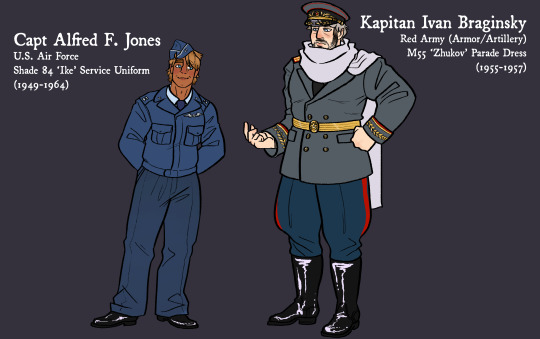
Uniforms of the Cold War
There were many pieces and variations of the uniforms for the emergent post-World War II powers. While they remained mostly styled after yesterday's uniforms, several changes came about to bring us the outerwear that most recognizes today. These renderings are not perfect, but they can hopefully provide a suitable image of the era.
[ sources ]
Capt Alfred F. Jones // U.S. Air Force
After the Air Force was codified as an official military branch in 1947, we find Alfred sporting the 1949-1964 Air Force blue (shade 84*) Field/Service uniform. This version, rather than the McPeak Dress Jacket, is based upon the Eisenhower or 'Ike' Field Jacket (M1943 accompaniment) made famous by General Dwight D. Eisenhower. The Air Force did allow for the tan jacket typical of the time to also be worn - and for fellow Hetalians you will recognize the tan or olive drab Ike jacket as the typical choice for Alfred's Cold War dress - however, in 1949, the release of the Air Force Blue drove a push for a new wave of uniforms. Its accompanying garments should be as follows; shade blue 120 cotton poplin (pictured)/shade 126 cotton oxford undershirt; shade 84 service necktie**. The uniform can be worn with either the Service Dress Cap or the flight cap (pictured above), both required to be shade 84. As an officer, Alfred's flight cap bears a silver cord braid. Last but not least, the required dress shoes shall be black and socks shall be black.
*The trousers should be the same shade as the jacket, but they were made darker for artistic reasons.
**The necktie - while listed as shade 84 - often ended up darker than the jacket, likely due to material.
- - - - -
Kapitan Ivan Braginsky // Red Army (Artillery)*
The uniforms of the immediate post-war Soviet Union, like the United States, closely followed those of the Great Patriotic War. Ivan wears a very short-lived uniform, perhaps misleadingly known as the 'Zhukov' officer dress, despite the fact that then-Minister of Defense Georgy Zhukov was a strong pillar against the naval-styled uniform. This style was produced from 1955-1957; from the death of Stalin until the end of Zhukov's tenure as Minister of Defense. It features the M55 Dress jacket in a stormy, steely blue-gray (listed officially as gray). This jacket may have been worn as a parade, dress, semi-dress, or even service jacket (sources vary) - pictured above is the 'Parade Walking-Out' version of the jacket. Paired with the M55 are the dark blue officer breeches of the time. These would have been upheld by suspenders and paired with no foot or leg wraps. Upon Ivan's uniform is featured red piping and black velvet hat banding denoting his service in the Armored and/or Artillery forces, in contrast to the raspberry of infantry. Ivan is far too large to fit inside a tank, so Artillery became his assignment. The Zhukov-style uniform is easily recognized by the gold cockade and leaves upon the visor of the officer's cap. Hidden by Ivan's scarf are notched lapels and black velvet panels. He wears a ceremonial belt worn in conjunction with the Parade Dress.
*I apologize for this section being less detailed. Finding decent sources on Soviet-era uniforms in my region that aren't on apologist forums can be difficult as I do not have access to a more formal library or archive.
[ sources ]
#hetalia#historical hetalia#aph america#aph russia#hws america#hws russia#alfred f jones#ivan braginsky#alpha romeo tango#alfred f. jones // daring to fly#ivan braginsky // Не остаться в этой траве#i forgot to link all the forums i trolled for soviet uniform information because godDAMN i'm telling you#it took me two and a half hours to find what i even did to draw ivan as you see him#and he's so not perfect#but it's 2:40 am
235 notes
·
View notes
Text
“Don't join the book burners. Don't think you're going to conceal faults by concealing evidence that they ever existed. Don't be afraid to go in your library and read every book...”
― Dwight D. Eisenhower.
#booklr#books#bookblr#fiction#reading#quote#quotes#quotation#quotations#book quote#book quotes#book quotation#book quotations#eisenhower#dwight d eisenhower#book#books and reading
99 notes
·
View notes
Note
I dunno if you saw the history channel documentary about jfk that was recently aired but I thought it was funny that conan o'brien was one of the commentators and it said he was on the board of directors of the jfk library!
I haven't watched it yet, but I plan to. I'll pretty much watch any documentary that Peter Coyote narrates. When I am reading books, the voice I hear in my head is his.
Conan is a legit Presidential history nerd. I heard that a long time ago directly from a comedian that I knew who did his old show on NBC. He used to have a General Eisenhower coffee mug on his desk on TV for years. And several years before historian and biographer Edmund Morris passed away, Conan did a GREAT interview with him where they talked a lot about Presidents. I don't know if he's a big enough Presidential history nerd that he follows my blog (I mean...I'm pretty sure my blog gets you more Presidential history street cred than being on the board of the JFK Library), but he's welcome to come chat with me about Franklin Pierce and LBJ anytime.
27 notes
·
View notes
Note
Assuming that the Ghost Gentlemen read, what books do you think would be their favourite? (maybe include Rorke, Ajax, and Elias too? 👉🏻👈🏻)
Oooh, I love this question! Let's take these fellas to the library of badass, shall we? Complete with pictures in case any of you all are looking for new reading material!
Merrick: Merrick is predominantly a non-fiction reader. Sure, he reads fiction occasionally but non-fiction scratches a particular itch for him. I can easily see him with a copy of The Unit by Adam Gamal.
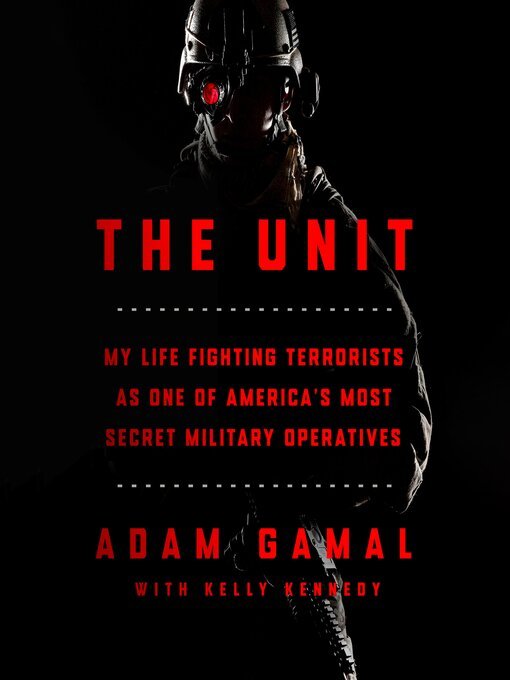
Keegan: This man loves reading. It's one of his hobbies and he loves a really good page- turner. He downs books the way Hesh downs pussy locusts down a wheat field. I mentioned in a previous post on my blog he most likely owns a copy of Rainbow Six by Tom Clancy. But, I can easily see him also going through a copy of Project Hail Mary by Andy Weir.
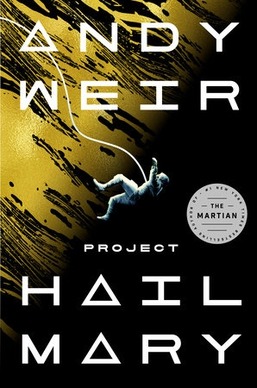
Logan: This guy is a straight up Tim Lebbon fan. You'll definitely find a copy of Coldbrook in his bunk. (Great fucking book, btw. Can't recommend it enough).

Hesh: Hesh enjoys a good fantastical piece, especially if they have historical or setting dependent elements. I can see him getting into things like the Southern & Southwest Gothic genres. Ring Shout by P Djèlí Clark would be something he would like. Sundial by Catriona Ward would be another.
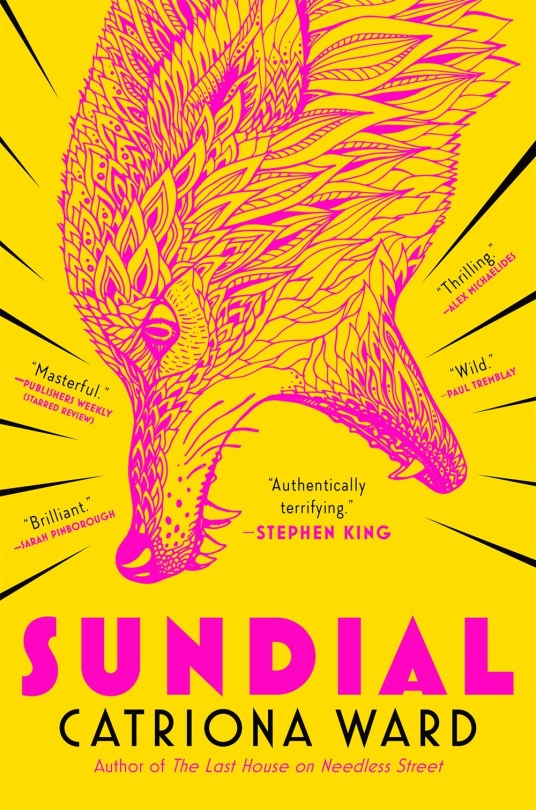
Kick: My man is a straight up sci-fi reader. He's really into that cult cyberpunk genre. You'll totally find Neuromancer by William Gibson or Snowcrash by Neil Stephenson in his bunk. Homeboy even named his computer 'Wintermute' because he loves this genre so much.

Ajax: Aww Ajax. This guy loves his suspense with a bit of a horror bent. Bonus if it's in an unconventional setting. The Dark by Emma Haughton would be something he'd like.

Rorke: The Boogly. (Great fucking book, can't recommend it enough either).
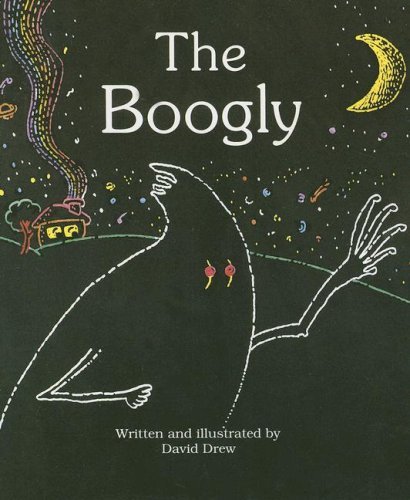
Elias: Elias strikes me as a straight up non-fiction reader. From the serious to the more interesting, he's not picky so long as it's engaging. If you're searching through his library you can find something like Eisenhower by Jean Edward Smith or even a book like Legacy of Ashes by Tim Weiner.

As you can probably tell, I fucking love reading. Would have added more pics but apparently there's a 10 pic limit to posts. Sorry for any typos.
11 notes
·
View notes
Text
Til The End Of Eternity || Chapter eleven: Smother (11/?)
(Douxie Casperan x f!reader)
Summary: Y/n is trying to figure her life out but is going to be hard since her brother is the new trollhunter and she is plagued by dreams and feelings she doesn’t understand.
Chapter Summary: Y/n learns about Douxie’s new feelings for her. Strickler needs protection
Word count: 2582
Warnings: lil bit of angst?
(Season 1 Episode 20, 21,23,24)
Song?: Smother by Daughter
Previous - Next
Masterlist

“Jim is in more danger than we thought” Y/n grabbed one of Blinky’s books and showed him the page she was reading “Angor Rot made a bargain. He obtained his magic but cursed his soul into a single ring, the Inferna Copula” she pointed to the picture of the ring.
“Mm, picture. Helpful” said Aaarrrgghh.
“Who wears the ring, controls him” Y/n continued. When her magic came back, a lot of knowledge came back too.
“It says here that Angor’s been stealing the souls of Trollhunters in a blasphemous attempt to fill the void ever since” Blinky grabbed the book from Y/n’s hands. After a moment he turned to his friend “You don’t have to hide it from me. I might only have two eyes, but I can see clear as day. It’s obvious”
After their quest to Gatto’s cave, Blinky had returned differently. The once blue troll was now…a human.
Y/n straight herself up. She had sensed a shift in Aaarrrgghh behavior but said nothing in fear of overstepping.
“Ever since my human deformity you have been…distant” Blinky complained.
Y/n frowned. She wasn’t expecting that.
“Uh…yes. Distant” the bigger troll nodded.
“I may look different but I’m the same Blinky. How about to cheer you up, maybe later today, I could rent a mini-van we could go for a drive? Something with tinted windows, of course” Blinky offered with excitement. He was desperate to fix the problem that had separated from his friend “I hear we are not too far away from the world’s largest thermometer! I bet you could eat it!”
“Mm, not today” Aaarrrgghh shook his head and left the library.
“Perhaps another time, my dear friend” Blinky said as he watched his friend leave.
“I’m sorry, Blinky” Y/n tapped his shoulder in an attempt to calm his sadness.
Blinky sighed, still looking at the door.
—
Y/n walked down the stairs of her house in a hurry. She overslept and was late to her shift at the store.
“Hey, m-“ she stopped when she saw Blinky sitting on the couch. She furrowed her brow. Why would the troll be here?
“Oh, good, good. Good afternoon, Mr. President Eisenhower” Blinky said into the phone.
Y/n rolled her eyes “Great cover” she thought.
“I suppose I could pencil you in” he stood up and walked away to a place where Barbara couldn’t hear him.
Y/n stood still at the foot of the stairs, observing Blinky mumbling into his phone.
“Angor Rot is in the school” she heard him say.
She took a deep breath and said “Mr. Blinky, do you need a ride to the school? I could give you one” she already had her hand on the door.
“Oh, yes, yes. Thank you, very much” Blinky nodded nonstop.
They were out the door and in Y/n’s car before Barbara could say something.
She started her old car and prayed for no transit.
“Do you think I could, you know, drive?” Blinky turned to her.
Y/n turned to him. Eyes wide open. She couldn’t believe his timing.
“Not today but someday” he continued.
“No” she stepped on the accelerator.
By the time they got there the fight was over. The police was there making sure all the kids were there.
“Master Jim” Blinky ran to Jim, Toby and Claire.
“Is everyone okay?” Y/n asked “Sorry for the delay. We wanted to help but we had to make a couple bathroom breaks” she gave Blinky a dirty look.
“Oh dear!” Blinky stomach gurgled.
“How did you survive Angor Rot?” Y/n asked ignoring the troll.
“Long story” Jim sighed and turned to where Strickler was standing “Have you heard of the Inferna Copula?”
“Indeed, I have” said Blinky. He and Y/n shared a look after seeing the ring on the changeling’s hands.
—
“Okay. We wait until he’s asleep” said Jim.
“I use my shadow staff to get us in” added Claire.
“And I ever so gently remove the ring from his finger”
“Woah. Hold up there, Mr. Storyteller. Do changelings even sleep?” Toby interrupted his friend.
“Yes, but we don’t know Strickler’s schedule” Y/n explained through the phone.
The kids were reunited in Claire’s house planning how to steal the Inferna Copula from Strickler, Y/n couldn’t go because she had to make up for being late to her shift.
“Good point. New plan” said Jim “We spike his coffee with extra strength cold medicine.
“I use my shadow staff”
“And I brin my warhammer in case that doesn’t knock him out”
“And I ever so gently…”
“Wait. What if he’s not alone? His office was guarded last time” interrupted Claire.
“Okay, fine. We spike the coffee”
“Shadow staff”
“I use my warhammer to take out his goons”
“Then, I ever so gently remove the ring”
“But what if it doesn’t come off?” Toby interrupted.
“Why would it not come off?” Jim was getting nervous.
“Oh lord” Y/n said to herself.
“I don’t know. Maybe it’s glued on, or he added a few pounds” Toby explained his reasoning.
“Why would it be glued on, you dingus?” Claire said.
“You said be ready for every precaution!”
“He’s waking up!” Screamed Claire.
“Oh, how is he waking up? This isn’t even really happening!” Complained Jim.
“Cut off his hand!” Claire screamed again
“What?”
Y/n giggled. She could see the desperation in his brother’s eyes.
“Use your sword. Hurry do it!” Claire insisted.
“No, I’m not gonna cut—“
“Do it! Do it! Before it’s too late”
“Wait!” Y/n stood up.
The man that was still hanging out in the store looked at her.
“Sorry” she whispered. She sat back down and turned to the side so he wouldn’t hear her.
“If you cut his hand you cut mom’s hand too”
“Oh, I forgot. Angor Rot’s binding spell” Jim sighed “We’re not ready. There’s too much risk”
The costumer came up to the register and Y/n had to put her phone down.
“We’ll figured it out, Jim” she said before hanging up.
After the last buyer left, she was finally free. Outside the sun was setting. The sky was a beautiful pink shade. Around this time, the people of Arcadia are already home or on their way, leaving the streets almost empty.
She put the store keys on her bag and stretched her arms, her elbow cracked after holding the phone for so long.
Y/n crossed the street. It’s been three days since she started avoided walking by the library were Douxie worked. She has spent a lot of time with Douxie lately and she was afraid that she was smothering him. Of course, all she wanted was to keep the routine they had the last couple of weeks: go to the library, scratch Archie’s head and hang out with Douxie until his shift at Benoit started and then go home but she was scared it was too much. What if she was too much? Maybe she should give him some space and focus on her training for a while.
Y/n lifted her eyes from the floor to see if the stoplight had changed and saw them. Douxie and the pink haired girl that worked at HexTech, Zoe, they were just a couple steps away from her. Y/n started to get close go them to say hi when he heard him:
“I don’t know how to tell her! I mean, I don’t want to be rude”
“It’s not rude to set a boundary” Zoe replied. She seemed annoyed “If she’s annoying tell her to stop”
“But she has been so nice. I don’t know, Zoe” he scratched his head.
Y/n felt the blood rush to her ears. It couldn’t be.
“Listen, I already told you this last week. Talk to her”
The stoplight shifted and everyone keep walking but Y/n just stood there, watching them leave.
Y/n’s soul had fallen to her knees. She felt her blood stopping in place, her eyes filling up with tears. She felt light-headed. Her heart was broken. She had smothered him and he was too kind to tell her.
A thunder erupted making them stop. The cold rain started to fall. Everyone rushed to get protection except Y/n that stood there, watching the spot where Douxie had told Zoe he didn’t want her
“Are you okay, kid?” An old man holding an umbrella stopped next to her.
“Yes” she sighed. Her eyes wouldn’t leave the now empty spot.
“Let me help you cross the road” the man offered.
She nodded.
The man grabbed her arm and guide her across the street, stopping under the roof of some store so she wouldn’t get more wet.
“Are you sure you don’t want me to call anyone?” He put his hand on her shoulder
Y/n lifted her eyes from the floor and looked into the man’s pale blue eyes. He was much taller than her.
“No, but thank you for your kindness” she smiled.
The man smiled back.
“You remind me of my kid. Head always in the clouds” he laughed and left her under the roof.
Y/n got home and went directly to the bathroom. She dropped the wet clothes on the floor and sat in the shower. The hot water melted the sadness off her skin. Her mind was numb. No thought went through her head, just the water hitting her back. She waited for the tears to fall but they never did. Eventually, she gave up and stood up.
When Y/n got out of the shower she stepped on something hard. She lifted her foot and saw her pebble, the pebble that she thought was on her bag.
“Maybe Al dropped it here” she thought, taking the pebble to her chest.
Y/n dragged her feet to her bedroom. Her body didn’t have energy, every single bit of it left through the drain.
Eventually, she dressed up and threw herself into the bed. In the darkness, she felt something or someone stepping on her mattress but she couldn’t care. The void had swallowed her.
“What happened?” Al stood next to her head.
Y/n sighed in response.
“Doesn’t matter” he said as he curled himself next to her neck “Tomorrow is another day” he licked the single tear that had fallen from her cheek.
—
Y/n opened her eyes, she wasn’t in her room anymore, she was in the woods, the woods that she’s been dreaming all her life.
“Welcome back to the land of the living”
Y/n stretched her arm trying to feel her comforter but she wasn’t in her bed, she was laying on top of a bed of leaves. She turned to look for Al and saw him sleeping next to her feet.
“Do you feel better?” Asked the woman to her right. A shadow was blocking her face but Y/n’s recognised her anyway “A bed made of leaves is no place for a lady like you to sleep”
Y/n didn’t say anything, she could only focus on the woman’s warm hand brushing the leaves away from her hair.
“Everyone is worried about you, Y/n. You can’t keep running to the woods like this”
“That’s not true” Y/n sat up.
“Oh, Y/n of course it is”
“Hisirdoux is not. He told me himself” Y/n crossed her arms.
The woman chuckled, “He is worried the most. Your father had to stop him from running to the wood to look for you!”
Y/n imaged Hisirdoux pout when he was told he couldn’t do something and smiled.
“Look at that smiled” the women tickled Y/n side “You like him”
“I do not” Y/n blushed.
“Young love is so sweet” The women chuckled and pinched the little girl’s cheeks “There is no crime in liking the errand boy”
“Stop it” Y/n’s cheeks darken further.
“I will not until you admit it” the women try to tickle the confession out of Y/n.
“Stop” she laughed.
—
Y/n lay there in her bed for what felt months yet also felt hours. Her phone stacking with messages yet she wouldn’t answer, she couldn’t even see them in case one of them was Douxie’s.
She heard the news of the destruction of the Inferna Copula in the brief time she met with Jim by the door of the bathroom. He had stopped his rambling when he saw his sister’s lack of response but that didn’t stop him from trying to get a reaction out of her.
One morning, Jim opened the door, his armor on.
“Y/n wake up! I need your help” he shook his sister awake.
“What?” She turned to him.
“Strickler is down stairs hiding from Angor Rot”
“Is this another attempt of getting me out of bed? I told you I am sick” she turned to the wall.
“No, no. Come with me” Jim grabbed her by the arm and dragged her to the kitchen.
“Slow down, Jim” the boy had gotten stronger with his training and was almost dragging his sister down the stairs “Why do you have a smelly sock?” Y/n cringed when the smell got to her.
In the kitchen, Strickler was strapped to a chair, sleeping.
“Really?” She rolled her eyes at the view.
“He said Angor Rot was trying to kill him but nothing happened”
Y/n sighed. She didn’t have the patience to deal with the changeling. She took the sock from Jim and dangled in front of his face.
“Ugh! What is that?” Strickler jumped after smelling the rotten sock.
“Wakey, wakey. We survived the night with no sign of Angor Rot. Congratulations” Jim stepped in front of the changeling and took back the sock from his sister’s hand “We thought we’d bring you some breakfast” The boy threw the sock in his face.
“I don’t eat socks” Strickler scoffed “And I don’t appreciate being tied up”
“Cry me a river” Y/n crossed her arms.
“I asked you to protect me not torture me”
“And I said I’d keep you safe, not comfortable” with his sword, Jim cut the rope that was tied to Strickler’s wrists.
“Well, the sun is up. We’ll have until sundown to get me as far away as possible” Strickler rubbed his wrist as he looked through the window.
“Fine. Let me call the team” Jim grabbed the walkie-talkie from the counter.
Y/n jumped onto the counter next to her brother.
“Trollhunter to Warhammer, you copy?”
“Oh, goodie. The puberty Patrol is on the case. I feel so safe” Strickler mocked.
Y/n rolled her eyes and stuck her leg up when Strickler started to get to close to Jim but he yanked Jim’s walkie-talkie away anyway.
“Do you think your friends will have any chance against that killer? They’ll be a liability” Jim grabbed the walkie-talkie back while Stickler talked “May I remind you, you destroyed Angor’s soul. He’ll be out for blood, be it yours or theirs”
Y/n took deep breaths, trying to control the anger that started to simmer in her stomach and not hit the changeling right in the face while Jim told his friend to look for information on the last stone.
“Smart choice. For once, you’re learning” Strickler grabbed the empty coffee pot.
“For the record, Angor Rot destroyed his own soul” Jim said giving his teacher the cereal box.

A/n: hiiii hellooo!! I didn’t forget about the update!! I just had the worst migraine in the world im sorry 💖
#tales of arcadia#douxie x reader#douxie#hisirdoux casperan#hisirdoux x reader#toa#trollhunters#my writing#til the end of eternity
40 notes
·
View notes
Text

While the shadow Senator Joseph McCarthy left over the latter half of the 20th century in the United States is largely unavoidable, what is less well known are the circumstances under which his infamous witch hunts under the umbrellas of the Red and Lavender Scares (where he pursued people with real or imagined communist or lgbtq leanings) came to a close.
This itself is a story with several contributing factors.
McCarthy's Chief Counsel was a lawyer by the name of Roy Cohn (on the right on the main image, McCarthy on the left), a virulent anti-communist who was also the chief prosecutor for the Rosenburg Spy Case (arguing successfully for their executions despite even J Edgar Hoover thinking executing a mother with two young children would be unpopular). He was also a closeted homosexual, although his own leanings were an open secret among the US government, not that this deterred him from purging the US government of suspected gay and lesbian people (leading to 5000 people getting fired from their jobs).
Now, in November 1953, one of Cohn's associates by the name of G. Davies Schine (with whom Cohn had toured Germany previous to remove books by suspected communist authors from United States Information Agency libraries) was drafted into the US army. Cohn and McCarthy attempted to use their influence to pressure the army into having Schine stationed near to them in the US (some have read this as Cohn wanting his friend close by, others have suggested they were romantically involved, no confirmation is available that I can see, either way preferential treatment was demanded), and when the army told them no, the pair decided to threaten the army by turning their anti-communist hunts against them in retaliation.
And if you'd think that threatening the United States army in the early 1950s, when a former WWII general Dwight D. Eisenhower was president was a poor decision, you'd be right!
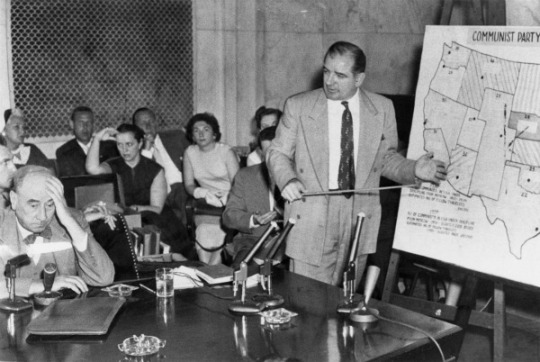
As such, in early 1954 the Senate Permanent Subcommittee on Investigations, usually chaired by McCarthy himself, was given the task of investigating whether McCarthy had indeed improperly sought preferential treatment. And unlike some of the other trials, the decision was made by ABC to televise the hearings, giving the American public their first view of what McCarthy's hearings were actually like as he turned his standard tricks against the army prosecutors.
You'd be right in thinking that it was more than a touch cynical that what it took to turn America against McCarthy was him attacking white, straight army dudes, but nevertheless that's what happened.
The army hired Boston lawyer Joseph Welch to make its case. At a session on June 9, 1954, McCarthy charged that one of Welch's attorneys had ties to a Communist organisation (the attorney in question, Fred Fischer, had been a member of the progressive National Lawyer's Guild). As an amazed television audience looked on, Welch responded with the immortal lines that ultimately ended McCarthy's career: "Until this moment, Senator, I think I never really gauged your cruelty or your recklessness." When McCarthy tried to continue his attack, Welch angrily interrupted, "Let us not assassinate this lad further, senator. You have done enough. Have you no sense of decency?".
Public support began to immediately drain from McCarthy, helped along by such things as the pioneering TV documentary series See It Now, where journalist Edward R Murrow (picture below) used clips of McCarthy's own behavior to underline how the senator had been exploiting the public's fear and spreading lies (such as implying the FDR and Truman administrations were treacherous) for his own political gain.
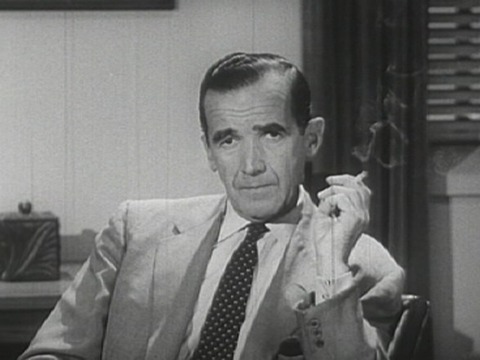
(Transcript of the episode here)
McCarthy was cleared of the charges, with sole responsibility being laid at the feet of Cohn, who resigned. By March of 1954, Joe's own Republican base in his home state of Wisconsin launched the Joe Must Go campaign, wishing to oust the senator for disrespecting the army, President Eisenhower, and for ignoring the plight of local dairy farmers facing price-slashing surpluses (y'know, the kind of issues he was elected to deal with rather than wandering around the United States harassing people for being gay, communist or being a gay communist).
He was eventually censured by the Senate on various charges that essentially amounted to making his colleagues look bad by association, and his political career limped along for a further two and a half years before finally dying of "Hepatitis, acute, cause unknown" on May 2, 1957. A diagnosis possibly made worse by both his heavy drinking and morphine addiction.
Schine, for his part in the proceedings, dropped out of politics following the hearings, where he entered the private sector, where among other things he made a cameo appearance in the 1966 Batman show (the Entrancing Dr Cassandra). He would eventually die in 1996 alongside his wife, and their 35 year old son in a private airplane accident.
And what of Roy Cohn... Well... While there are folk who'd go through an experience like this and try to either fade into obscurity or try to improve their image, Roy was not one of those people. He worked for the Mob in New York, the Catholic Church, Rupert Murdoch... and Donald Trump.

Cohn gathered a reputation for being willing to do whatever he felt was necessary to enrich either himself or to get his clients whatever they desired. This eventually led to his getting accused of theft, obstruction of justice, extortion, tax evasion, bribery, blackmail, fraud, perjury, and witness tampering. Indeed, Cohn's willingness to happily commit crimes for his clients has reportedly led to frustrations with Trump's recent legal trouble, with him being annoyed his current legal representatives aren't willing to do criminal stuff for them like Roy did back in the day.
Despite all of this though, Cohn remained a popular figure in conservative politics, even introducing Roger Stone to Trump, and was notably close friends with Ronald and Nancy Reagan, with whom he acted as an informal advisor and even ran Ron's presidential campaign in New York, Connecticut and New Jersey.
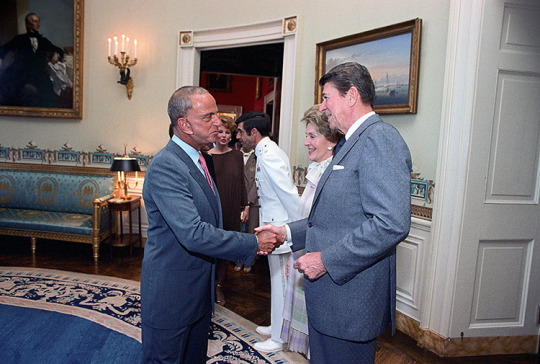
In 1986, Cohn was disbarred for, among other things, attempting to forge a client's will to make himself the beneficiary upon their death. On 2 August of that year, he died of complications from AIDS, having been cut off by Trump despite Cohn's loyalty (and help with lucrative mob contracts) over the years.
The IRS promptly seized his property, due to his owing the US government $7million in back taxes.
#irregular incidents#the cold war#crime#joseph mccarthy#roy cohn#history#american history#american politics#lgbtq#batman 1966
30 notes
·
View notes
Text
Vivek Ramaswamy and other Republicans are trying to rehabilitate the memory of Richard Nixon. I will concede that Nixon is at least a step up from Donald Trump; Nixon wrote his own books and probably even read them.
In the current GOP, Dwight Eisenhower and Gerald Ford are nonpersons; the integrity and honesty of Ike and Jerry are too high a standard for today's cesspool-dwelling Republicans.
Current Republicans are Reaganites In Name Only. If he somehow returned, Uncle Ronnie would castigate the Kremlin-friendly Trumpsters who play footsie with the Evil Empire which is now led by a onetime KGB (secret police) colonel.
The Bush clan has never been on great terms with the Trump crew. Jeb's kid, George P. Bush, had tried to save his own political skin by pandering to MAGA – but to no avail.
So Richard "Tricky Dick" Nixon enters into the revisionist GOP pantheon.
In late August, Republican presidential hopeful Vivek Ramaswamy took a break from his typical campaign events to make a pit stop at an unusual venue for mainstream Republicans: The Richard Nixon Presidential Library. Speaking before a packed house, Ramaswamy was slated to deliver a speech on foreign policy. But his opening remarks served the more provocative purpose of challenging Nixon’s much-maligned status in the annals of conservative history.
“He is by and away the most underappreciated president of our modern history in this country — probably in all of American history,” said Ramaswamy, without a hint of irony.
Ramaswamy’s homage to America’s most disgraced ex-president perplexed some liberal commentators, for whom Nixon remains the ultimate symbol of conservative criminality. But Ramaswamy is far from alone in rethinking Nixon’s divisive legacy. Among a small but influential group of young conservative activists and intellectuals, “Tricky Dick” is making a quiet — but notable — comeback. Long condemned by both Democrats and Republicans as the “ crook” that he infamously swore not to be, Nixon is reemerging in some conservative circles as a paragon of populist power, a noble warrior who was unjustly consigned to the black list of American history.
Across the right-of-center media sphere, examples of Nixonmania abound. Online, popular conservative activists are studying the history of Nixon’s presidency as a “ blueprint for counter-revolution” in the 21st century. In the pages of small conservative magazines, readers can meet the “ New Nixonians” who are studying up on Nixon’s foreign policy prowess. On TikTok, users can scroll through meme-ified homages to Nixon. And in the weirdest (and most irony laden) corners of the internet, Nixon stans are even swooning over the former president’s swarthy good looks.
I can understand them loving Nixon for his attempts to improve ties with Putin's old Soviet Union. But Nixon as a sex symbol requires a strong imagination. He's hot only when compared to Donald Trump or Rudy Giuliani.
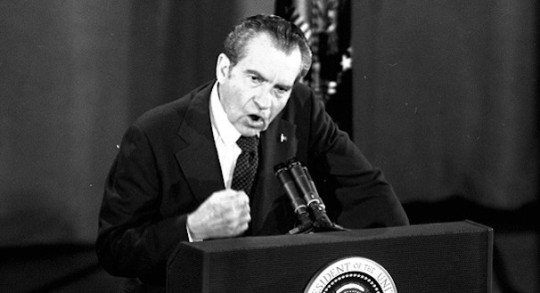
“No man is perfect — Richard Nixon definitely wasn’t — but one element of his legacy that I respect is reviving realism in our foreign policy,” said Ramaswamy in an interview from the campaign trail, pointing specifically to Nixon’s successful efforts to reestablish diplomatic relations with China during the 1970s. “Pulling Mao out of the hands of the USSR was one of the great victories that allowed us to come to the end of the Cold War … and it took an independent thinker like Nixon to lead us out of that.”
What Ramaswamy ignores is that Nixon escalated the Vietnam War after promising "peace with honor" in his 1968 campaign. After Nixon invaded Cambodia in 1970, large protests broke out across the US which led to the killings of unarmed students by National Guard troops at Kent State University in Ohio and Jackson State University in Mississippi.
And Nixon certainly did not pull "Mao out of the hands of the USSR" the way Vivek claimed. The China-Soviet split pre-dates the Nixon administration by over a decade. The USSR and China even fought a small border war against each other in 1969.
youtube
Ramaswamy has a pitiful understanding of the world. Like Elon Musk, most of his knowledge of geopolitical history seems to come from memes and dubious social media posts. Tech billionaires are among the most ignorant people on the planet outside of their narrow fields.
#richard nixon#vivek ramaswamy#republicans#republicans think nixon is hot#springtime for nixon#the vietnam war#china#geopolitics#cold war history#tech billionaires#election 2024
11 notes
·
View notes